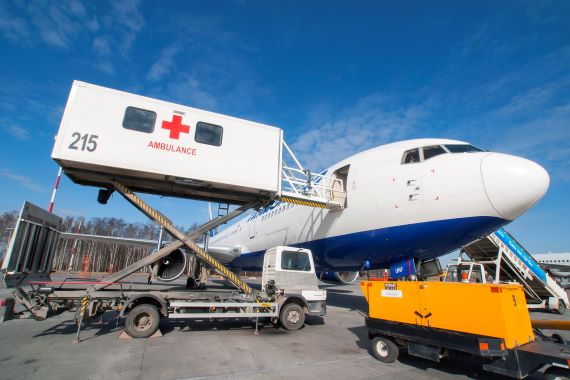
20 October 2022
Medical logistics
When looking for an industry in which it is necessary to tackle uncommon logistical challenges, one should consider medicine. There, one can find everything that makes a logistician feel like they are on the front line: the realization that human life and health are at stake, the responsibility for moving equipment and medicines with a value often expressed in seven-figure sums, the scarcity of time, the limited budget, the need to coordinate many critical processes simultaneously – this is medical logistics in a nutshell! Let’s take a closer look at a few areas of specialization.
Pharmaceutics
The supply chain must meet the requirements set by a list of applicable laws, primarily by the Pharmaceutical Law. In a specific market, the list of shippers and recipients of shipments is generally well known, and operations are repetitive and take place between a fixed pool of manufacturers, wholesalers and both general and hospital pharmacies. This affords the opportunity to plan the logistics handling of such orders well in advance.
Not to make things too simple, you need to keep in mind the limitations: pharmaceuticals have a limited shelf life, and you need to take this into account when planning the release of subsequent batches from warehouses. For many pharmaceuticals, a cooling network with temperature control of storage and transport must be maintained. This means providing temperature loggers and the infrastructure to collect, store and analyze this data. Budget planning must take into account the destruction of a drug of significant value, for example, due to overheating. In pharmaceutical storage areas, you need to provide emergency power sources and backup refrigerators into which drugs can be transferred in case the primary generators fail.
There is also the issue of safety. Many psychiatric and anesthesia drugs are either narcotics or drug precursors – their storage, movement and dispensing are subject to additional regulations that must be met.
Transplantology
Organ transplantation has a long history, and over the decades a lot has changed: surgical technology, diagnostic devices, drugs… One thing remains unchanged – the struggle against time, the need for instant circulation of information and the arrangement of transport of many people simultaneously, in different locations. At the forefront of logistically high-risk transplantation achievements is heart transplantation: the smallest number of donors, the shortest acceptable time between retrieval and implantation, the most numerous operating teams and enormous pressure, because if something goes wrong, the recipient is unlikely to get a second chance.
It all starts when a donor is submitted, for whom a recipient can be matched from the waiting queue in the database. Donor and recipient testing begins, and if a potential recipient is waiting for a transplant at home, they are transported to the hospital at that point. This is the first transportation challenge, because the patient needs to be delivered to the clinic quickly. If transport by ambulance would take too long, an LPR helicopter is deployed. The recipient must not have an infection: flu, runny nose or an untreated tooth rule out the transplant.
If the first stage of qualification is successful, a transport team is organized to harvest the heart from the donor. In practice, transplant teams that meet for one donor may be several, and each of them has the task of harvesting a different organ: heart, kidneys, lungs, liver, pancreas, corneas. Priority is always given to the heart – it lasts the shortest time outside the human body, only about 4 hours. Taking into account the length of the operation, a maximum of 2.5 hours remains for transport.
The distance between the donor reporting hospital and the heart transplant clinic is sometimes several hundred kilometers. It can only be covered in the required time by air, so it is necessary to find an available plane or helicopter. In Poland, the military and police traditionally help with this. Years ago, military AN-26 planes carried the transplant team along with an ambulance, and after the AN-26 was replaced, casa planes have been flown by the medics themselves.
Humanitarian aid
Now, that’s logistics on a grand scale, as hundreds or thousands of tons of equipment have to be transported to remote regions of the world, often under conditions of armed conflict or natural disaster. Most often these are medicines, medical equipment, container field hospitals and water treatment stations and sometimes also refrigerated storage facilities for corpses. Cargoes set off from many places and are delivered by various means of transport. It is necessary to assign them appropriate priorities, find carriers who agree to take part in the mission, designate landing sites for aircraft, provide road transport in the destination country, guarantee proper identification of the humanitarian column…
This is accompanied by a lot of paperwork: obtaining the appropriate approvals and permits to fly over dangerous areas, customs clearance, or permits to transport drugs. At the same time, movement in the other direction begins: evacuation of the wounded, or rotation of injured personnel. Optimization of logistics determines the success or failure of the mission, life or death of the injured.

















